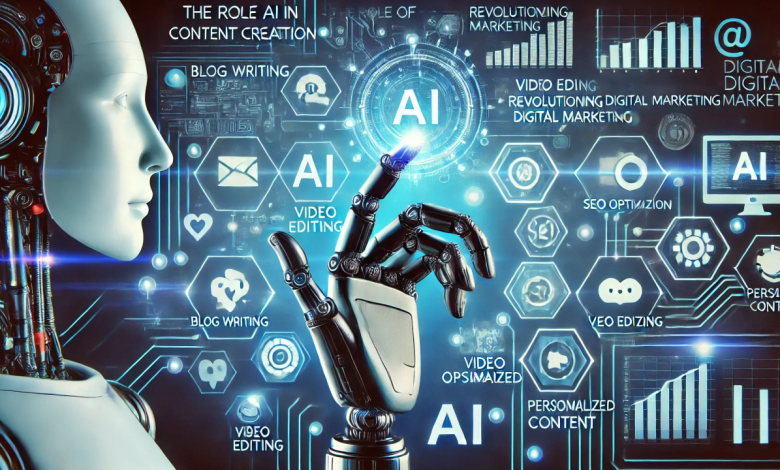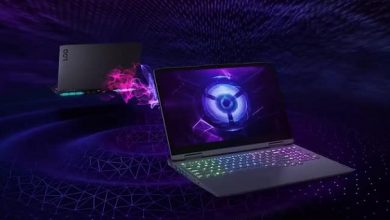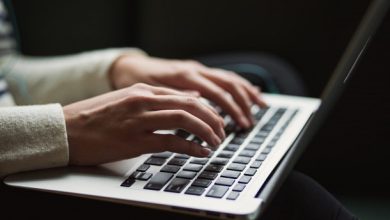How AI is Revolutionizing the Future of Digital Content Creation

The subject of artificial intelligence (AI) emerged as a buzzword and a visionary technology in the world of digital media but has now found a place as a critical creative companion. To creators, marketers and designers alike, AI has moved beyond automation into a powerful tool to edit videos, enhance photos and create content on par with the best humans have to offer. Through use of features such as Video to Video AI as well as Image to Video, the field of content creation is about to enter a world of unlimited possibilities.
Content production is getting magical with AI: The shift from Manual to Magical
In the past it was a labour intensive and highly skilled task to produce film and visual quality video content which necessitated software tools that were costly to acquire. With the recent development of AI, however, much of this work is being simplified or, outright, automated. Artificial intelligence in the present day can process, improve and even create videos and images with unbelievable precision and artistic harmony.
Not only does this save creators infinite hours, they also increase creative possibilities. AI can help whether you produce more professional content as a YouTuber or need large quantities of visuals as a marketing team or are creating multimedia as an independent artist.
Transforming Ideas into Visuals with Video to Video AI
Video to Video AI is one of the most innovative applications created in this industry as it is possible to use it to change existing videos to completely different visual formats or styles. It is not a simple matter of filters or simple editing but the utilization of AI to reemploy the original footage and enrich it stylistically and contextually.
Just consider what it would be like to transform a common corporate video into the form of an animated sketch, or revamping up old video footage into high-definition cinematic quality. When you use Video to Video AI, such changes take several minutes rather than hours or days.
Video to Video AI has some of the following key features:
- Art style transfer to original footage, such as art- or cinematic filters
- The possibility of scene reinterpretation permits the tone adjustment, color grading, and effects
- Resolution upgrades, making old, under resourced videos come to life in HD, or even 4K
When it comes to creating new content and digital marketing, this tool is one that represents an incredible payoff when it comes to creators and marketers who wish to produce something new without having to use costly resources on a reshoot or the recreation of an item or design.
Static to Dynamic: Breathing Life Into Images with AI
Image to video is another leap of creativity in the AI revolution. It is a method which takes still pictures and makes them into a video clip by predicting movement and texture and transitions. It has been fixed in the past but this one moves, breathes and tells a story.
Image to Video is highly effective particularly in the case of:
- ECommerce and advertising product animation
- Promotional stills social media reels
- Portfolios with moving visuals through digital arts of more interest
- Presentation and storytelling tricks in Education or Business environment
Instead of going by simple ways of adding motion to their slides, designers can now implement AI to apply natural fluidity to photographs, portraits, and graphics. It leaves the way to more interesting and interactive materials and does not need to be skillful in animation.
The Creative Edge: Why AI Tools Are Becoming Essential
Although certain creators might still feel uneasy about the idea of ceding the control over creativity to an artificial intelligence, the contemporary AI technologies do not aim to supplant an artist, but, on the contrary, to enable him or her. And this is the reason why progressive professionals are implementing AI throughout their workflows:
- Speed/Efficiency
Activities that previously required hours, like making an animation, synchronizing audio or editing a video with more than one layer, can now be completed in minutes. This adds flexibility that allows creators to concentrate on strategy and storytelling.
- Agencies and Brands Scalability
Marketing departments and content agencies fight to come up with large volumes of high quality content within a short time. AI fills that gap so teams may produce custom on-brand content at scale and speed.
3. Accessibility for Non-Professionals
Indemnity has made it so that even an ordinary person with little knowledge of technical work can make professional-grade visuals. AI makes creativity more democratic and basic users can generate output that previously took specialized training.
- Infinite Creativity
AI does not simply copy what already exists; it has the potential to be used in generating novelty, concepts, styles and variations that usual human creators could never have thought of. Creative tools such as Video to Video AI and Image to Video mean inspiration can be translated to action in almost no time.
Use Cases Across Industries
Video and image editing with artificial intelligence remain a tool used by more than just digital artists or social media influencers. They are leaving a footprint in many sectors:
- Marketing and Advertising: Videos enhanced through AI are being deployed in marketing campaigns to personalize outreach, A/B test visuals and to be seen in competitive markets.
- eLearning and Education: Animation visualization of the non animated text enables learners to recall and grasp the information more.
- Healthcare and Research: Medical surgeries and medical processes, AI is applied to create medical animations and medical simulations based on data or diagrams.
- Entertainment and Gaming: AI allows the developers to refine already created game footage or concept art and reduce pre-production time.
Ethical Creativity and Human Oversight
With the increasing engagement of AI in the creation of the content, ethics have to accompany it. Creators need to keep human control in mind, it is necessary not only to preserve originality and accuracy but also to prevent misuse and abuse, as well as their misrepresentation, of visual content.
Although platforms such as Image to Video or Video to Video A.I automate most part of the work process, the human element becomes crucial when it comes to curating, editing, and finalising any work. After all, it is the AI that is the helper not the artist.
The Future of AI in Visual Content
In the future, the combination of AI and digital creativity will simply gain strength.
You will find:
- Live and event AI editing Real time AI editing
- Computation of 3D and volumetric video starting with 2D
- Digitalization, machine learning Based on the capabilities of machine learning algorithms, it is possible to scale personalized content generation.
- Greater integration with VR and AR platforms to be immersive Incorporation and experience of haptics to be immersive Involvement and use of haptics to be immersive
- The opportunities are huge, and such tools as Video to Video AI and Image to Video are only a premonition of this new revolution in the world of digital technology.
Final Thoughts
AI is no longer an optional add-on to creations, it is turning into a creative essential. No matter what you are looking to create to improve or move mountains in media, or in terms of scale or artistic exploration, AI can deliver horsepower to make things go more quickly and more efficiently.
With the help of the platforms such as Video to Video AI and Image to Video, creators can recreate the atoms of the screen into movable tales, redesign previously made projects, and achieve magnificent outcomes with minimal effort.



